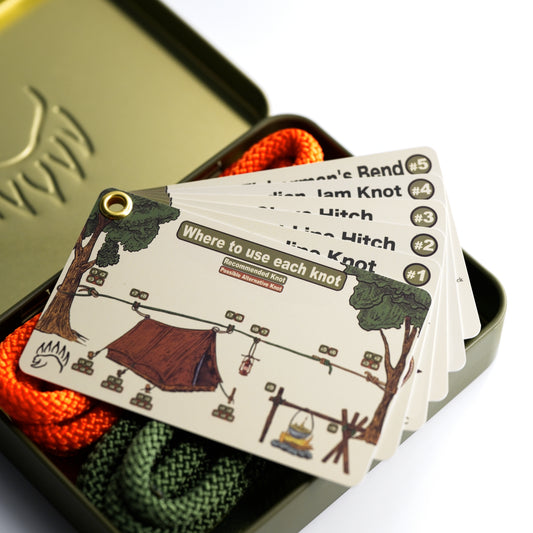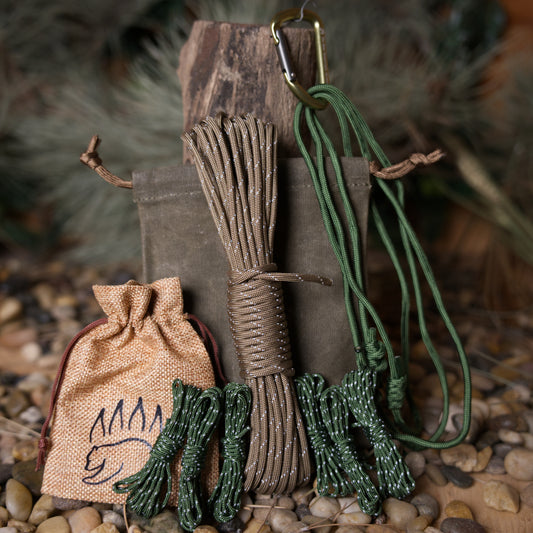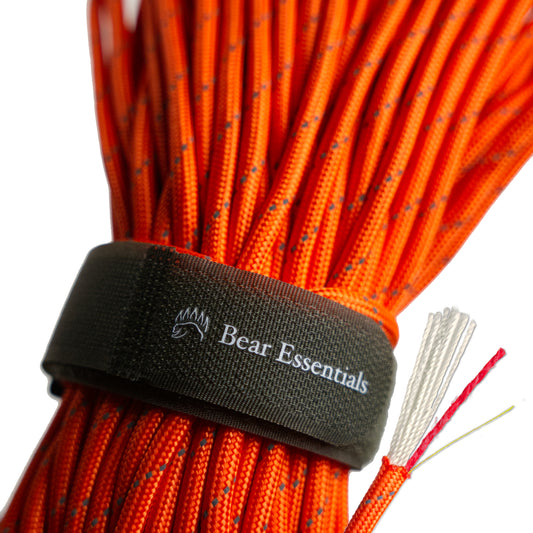How to Tie the Ground Line Hitch (Picket-Line Hitch)
Usage
The Ground Line Hitch, also known as the Picket-Line Hitch, is commonly used to secure a rope to a stake or post, particularly in camping for tent guylines or tarps. Compared to the Clove Hitch, which can slip under variable loads, this hitch offers greater stability for prolonged use, making it ideal for anchoring shelters. Its simple structure suits quick setups, but it may require adjustment for heavy tension. This knot is a reliable choice for outdoor fastening.
Why Learn the Ground Line Hitch (Picket-Line Hitch)?
Its secure design ensures stable anchoring to stakes. This knot is a practical choice for campers and outdoor enthusiasts needing reliable rope ties.
Common Uses
-
Camping:
- Secures guylines to stakes for tents or tarps.
- Ties ropes for wind-resistant shelter setups.
-
Bushcraft:
- Fastens tarps to stakes for temporary shelters.
- Secures ropes for hanging gear or food storage.
-
Utility:
- Ties ropes to posts for household or workshop tasks.
- Anchors cords for outdoor setups or temporary fencing.
ABOK Number
(Ashley Book of Knots)
Other Names
Category
|
Notable Features
- Strong Hold: Grips stakes tightly, resisting slippage under load.
- Easy to Tie: Simple technique, quick to learn and execute.
- Versatile: Suits camping, bushcraft, and utility anchoring tasks.
- Adjustable: Allows tension tweaks without retying the knot.
- Durable: Maintains security for prolonged outdoor use.
Variations
(No true variations listed; for added security, tie a stopper knot on the working end to prevent slippage.)
Similar Knots
Clove Hitch vs. Ground Line Hitch (Picket-Line Hitch)
- Pros: Quick to tie and versatile for securing to poles.
- Cons: Prone to slipping under variable loads, less secure than the Ground Line Hitch.
Taut Line Hitch vs. Ground Line Hitch (Picket-Line Hitch)
- Pros: Highly adjustable for tensioning guylines.
- Cons: More complex to tie than the simpler Ground Line Hitch.
History
The Ground Line Hitch, also known as the Picket-Line Hitch, likely originated in equestrian and camping contexts where secure anchoring to stakes was essential for tethering horses or setting up tents. Referenced in The Ashley Book of Knots (#1678), its design reflects simplicity and reliability for outdoor use. Its adoption in modern bushcraft and utility tasks highlights its enduring effectiveness for anchoring ropes.
Security Level
The Ground Line Hitch (Picket-Line Hitch) is reliable for securing ropes to stakes or posts under moderate loads, offering greater stability than clove hitch uses. It holds well when properly tensioned but may loosen under variable or heavy loads if not adjusted. For slippery ropes or critical tasks, a stopper knot can enhance security.
Downsides
- Tension adjustment: May require retightening under variable loads.
- Not for heavy loads: Less secure for extreme tension compared to complex hitches.
Structure
- Pass the working end of the rope around the stake or post.
- Cross the working end over the standing part, forming a loop.
- Wrap the working end around the stake again, passing it under the standing part.
- Tuck the working end through the loop created in step 2.
- Pull the standing part to tighten, adjusting tension as needed.
Pro Tip: Ensure the initial wrap is snug to maximize grip on the stake.
FAQ
Is the Ground Line Hitch (Picket-Line Hitch) strong enough for heavy loads?
It’s reliable for moderate loads like tent guylines, but ensure proper tension and stake stability.
What ropes work best for the Ground Line Hitch (Picket-Line Hitch)?
Flexible, strong ropes like nylon or polyester ensure secure anchoring.
How does the Ground Line Hitch (Picket-Line Hitch) compare to the Clove Hitch?
It’s more stable for prolonged use but slightly slower to tie.
Can the Ground Line Hitch (Picket-Line Hitch) be used for climbing?
No, it’s not suitable for climbing or life-support applications.
Why choose the Ground Line Hitch (Picket-Line Hitch) over the Taut Line Hitch?
It’s simpler to tie and sufficient for static anchoring, though less adjustable.
Important Notes on Safety
Common failure points include loose wraps or an unstable stake, which can cause slipping. Always verify the knot is used for appropriate tasks and correctly tied. Inspect ropes and stakes for wear or damage before tying. Ensure the knot is snug and the stake is firmly anchored. Practice tying in low-risk settings to ensure proficiency.









